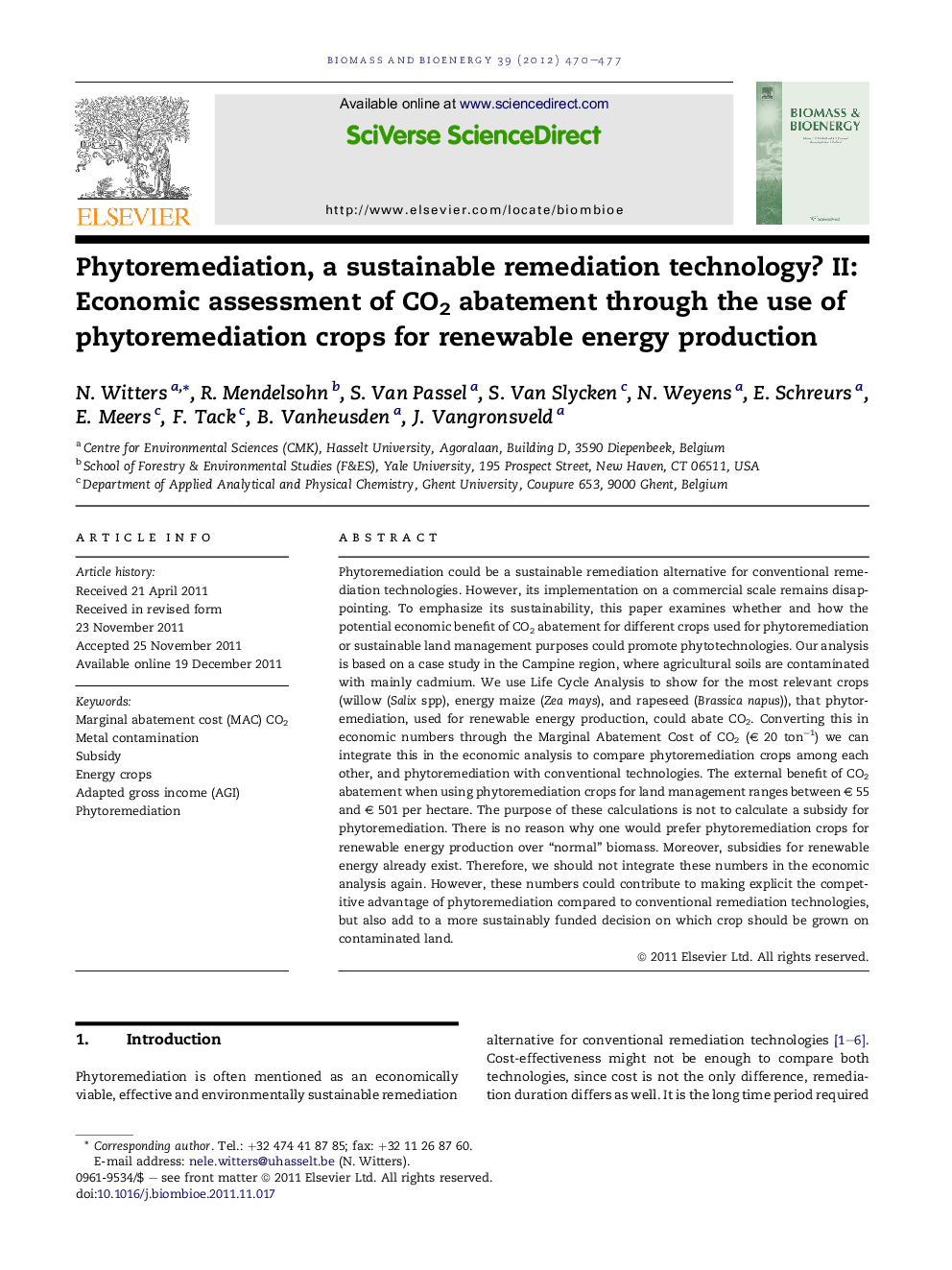| کد مقاله | کد نشریه | سال انتشار | مقاله انگلیسی | نسخه تمام متن |
|---|---|---|---|---|
| 677530 | 1459854 | 2012 | 8 صفحه PDF | دانلود رایگان |

Phytoremediation could be a sustainable remediation alternative for conventional remediation technologies. However, its implementation on a commercial scale remains disappointing. To emphasize its sustainability, this paper examines whether and how the potential economic benefit of CO2 abatement for different crops used for phytoremediation or sustainable land management purposes could promote phytotechnologies. Our analysis is based on a case study in the Campine region, where agricultural soils are contaminated with mainly cadmium. We use Life Cycle Analysis to show for the most relevant crops (willow (Salix spp), energy maize (Zea mays), and rapeseed (Brassica napus)), that phytoremediation, used for renewable energy production, could abate CO2. Converting this in economic numbers through the Marginal Abatement Cost of CO2 (€ 20 ton−1) we can integrate this in the economic analysis to compare phytoremediation crops among each other, and phytoremediation with conventional technologies. The external benefit of CO2 abatement when using phytoremediation crops for land management ranges between € 55 and € 501 per hectare. The purpose of these calculations is not to calculate a subsidy for phytoremediation. There is no reason why one would prefer phytoremediation crops for renewable energy production over “normal” biomass. Moreover, subsidies for renewable energy already exist. Therefore, we should not integrate these numbers in the economic analysis again. However, these numbers could contribute to making explicit the competitive advantage of phytoremediation compared to conventional remediation technologies, but also add to a more sustainably funded decision on which crop should be grown on contaminated land.
► We add CO2 abatement for each remediation crop to the private economic analysis.
► This values the advantage of phytoremediation compared to conventional remediation.
► This leads to a crop choice that considers an important environmental aspect.
Journal: Biomass and Bioenergy - Volume 39, April 2012, Pages 470–477